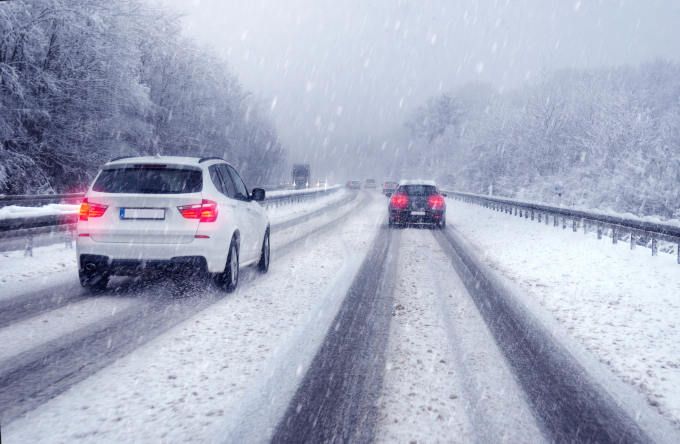Potholes Got You Rattled? A Survival Guide
Potholes are more than a simple nuisance. Stay safe on the road with this pothole survival guide.
It's the hidden enemy of NY Tri-State drivers. They appear almost overnight, frequently charading as innocent puddles, and you never seem to notice them until it's too late.
What are we talking about? Potholes, of course
Potholes can cause several problems for drivers. They can damage your car, leading to expensive repairs. They can also cause you to lose control of your vehicle, leading to a serious accident.
What causes potholes, and how can you protect yourself from them? Read on to find out.
What Causes Potholes?
Potholes are a common sight on roads in the late winter and spring. They form when water seeps into the pavement then freezes and expands, compromising the integrity of the road. This creates a hole in the road that can be difficult to see or avoid.
The material of the road also plays a role. Cement and asphalt are more likely to form potholes than gravel roads, as moisture can easily seep into the pavement.
The weight of the traffic forces the pavement to crumble and creates a hole in the road. As the stability of the road begins to degrade, more potholes can form.
Potholes vs. Cave-Ins
Potholes are a specific kind of road defect, while cave-ins are an entire other class of defects. Both are caused by similar factors, including water damage, erosion, and poor construction.
Cave-ins—sometimes referred to as sinkholes— are much more dangerous than potholes, as they can be very deep without a solid bottom, causing extensive damage to a vehicle that falls into it. Cave-ins can lead to emergency services being necessary to rescue drivers and passengers. Always call 911 if you see a cave-in.
Potholes are addressed by local municipalities, which involves patching or repaving the road. NY Tri-State drivers can report potholes to the local utility authorities for repair.
What Damage Can Be Caused By Potholes?
Hitting a pothole may seem like no big deal, but in many cases, it can cause considerable damage, including:
Tire Damage: Potholes can cause your tires to become compromised or blow out, which increases the chance of an accident.
Suspension System Failure: The suspension system is what keeps your car stable and prevents it from bouncing around. When it's damaged, it can be hazardous to drive.
Wheel Misalignment: If your car is out of alignment, steering is more difficult and can lead to an accident.
Shocks and Struts Damage: Struts are a vital part of the suspension system; they help stabilize your car's movements and improve handling when turning, braking, accelerating, or driving over rough surfaces.
Rim Damage: Potholes can cause your rims to bend or break, which can be costly to replace.
Catalytic Converter Damage: Potholes can damage your catalytic converter, leading to decreased fuel efficiency and increased emissions.
How Can I Protect Myself From Potholes?
Potholes can cause significant issues for your vehicle. Here are a few things you can do to protect yourself from the dangers of potholes in the NY Tri-State region:
1. Stay Alert!
The best way to avoid hitting a pothole is to be aware of your surroundings. Keep an eye out for them while driving, and be especially cautious at night or in bad weather conditions. Knowing the seasons that potholes are likely to emerge will help you be prepared.
2. Slow Down!
If you can't avoid a pothole, slow down as much as possible before hitting it. This will minimize the damage to your car. However, avoid swerving—as this can be even more dangerous.
3. Check Your Tires Before Leaving
Lower tire pressure or worn tire treads can make your car more susceptible to damage from potholes, such as a blowout or bent rims. Ensure your tires are properly inflated and have enough tread before hitting the road.
4. Maintain Your Suspension System
Sometimes you can't avoid potholes—which is why your suspension is critical. The suspension system of your vehicle is key in preventing damage from potholes. Make sure to have it checked regularly to ensure your safety on the road.
5. Don’t Tailgate
Not leaving enough room between you and the vehicle ahead prevents you from properly seeing the road ahead. It also doesn’t allow you enough time to avoid a vehicle that suddenly tries to swerve around a pothole or stop abruptly to cushion the impact of a pothole.
6. Report Potholes To Your Local Authority
If you see a pothole on the road, report it to your local authority. They will fix it correctly with the right materials, which will help you and other drivers avoid damage in the future.
Argh! I Hit a Big Pothole! Now What?!
Hitting or driving over potholes can be a jarring experience. It's essential to know the signs of potential damage to quickly address an injury to your vehicle to avoid costly repairs down the road while staying safe on the road.
Common signs of potential pothole damage include:
- Tire bulges or bubbles: Tire problems can quickly become very dangerous because they can cause a blowout. If you see any bulges or bubbles on your tires, immediately take your vehicle to a mechanic.
- Uneven tire wear: This is a sign that you may have alignment issues, which potholes can cause.
- Bent rims: A bent rim is a common sign of pothole damage, so keep a close eye on how your car feels and handles. Any structural damage to your wheels can create serious problems and safety concerns down the line.
- Noises: Rattling, clanking, and banging noises are signs of potential suspension system damage, which potholes can cause.
- Steering problems: If your car is difficult to steer, it may signify that a pothole has damaged your steering system. Similarly, if you find your vehicle drifting or pulling to one side, you may have a wheel alignment issue.
- Suspension damage: If your car is bouncing or swaying more than usual, it may signify that a pothole has damaged your suspension system. Other symptoms may include front-end nosedives when stopping and excessive vibration.
- Greasy or oily shocks and struts: If your car smells like oil or you can see grease on the shocks and struts, it may be a sign that they have been damaged.
It is essential to drive carefully and be aware of the dangers potholes pose. By following these tips, you can help to avoid damage from potholes and keep yourself and your passengers safe on the road.
Worried about Pothole Damage?
If you are concerned that your vehicle may be suffering from pothole damage, take it to a NY Tri-State AAMCO Center for an assessment. AAMCO’s trained and certified technicians will expertly diagnose and repair any front-end damage caused by a pothole to get you back on the road quickly and safely.
Expect the Best
AAMCO has over 60 years of experience delivering total car care, from the transmission to tune-ups for more than 20 million vehicles. Customers depend on us for:
- Exceptional customer service
- The latest technology for diagnosis and repair
- Expert technicians who “fix it right the first time.”
- Best warranty coverage available
- Convenient payment options with up to 12 months of interest-free payments
AAMCO Centers of the NY/NJ/CT Tri-State Area represent trust, quality, and value. If you’re having an issue with your vehicle, call us today!
Share




